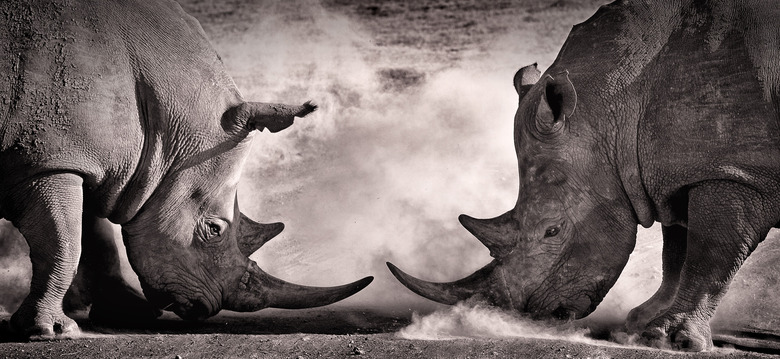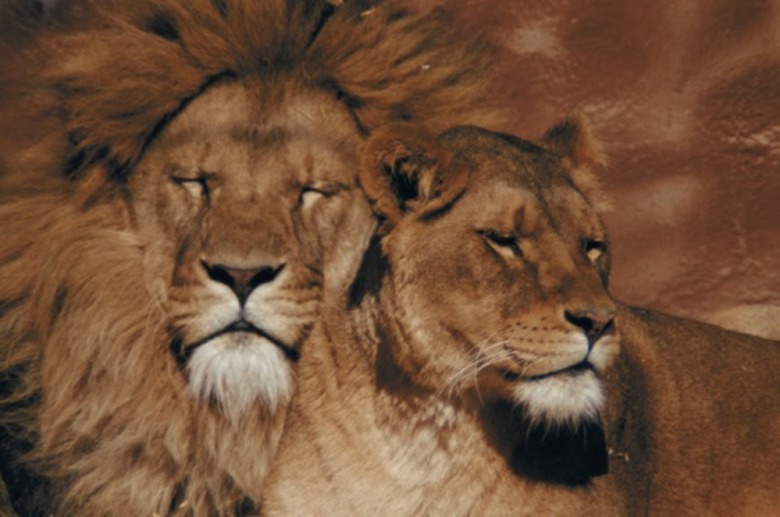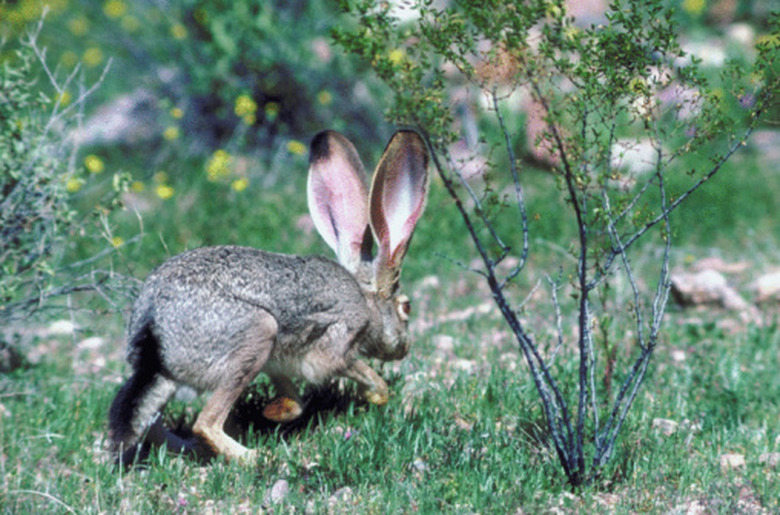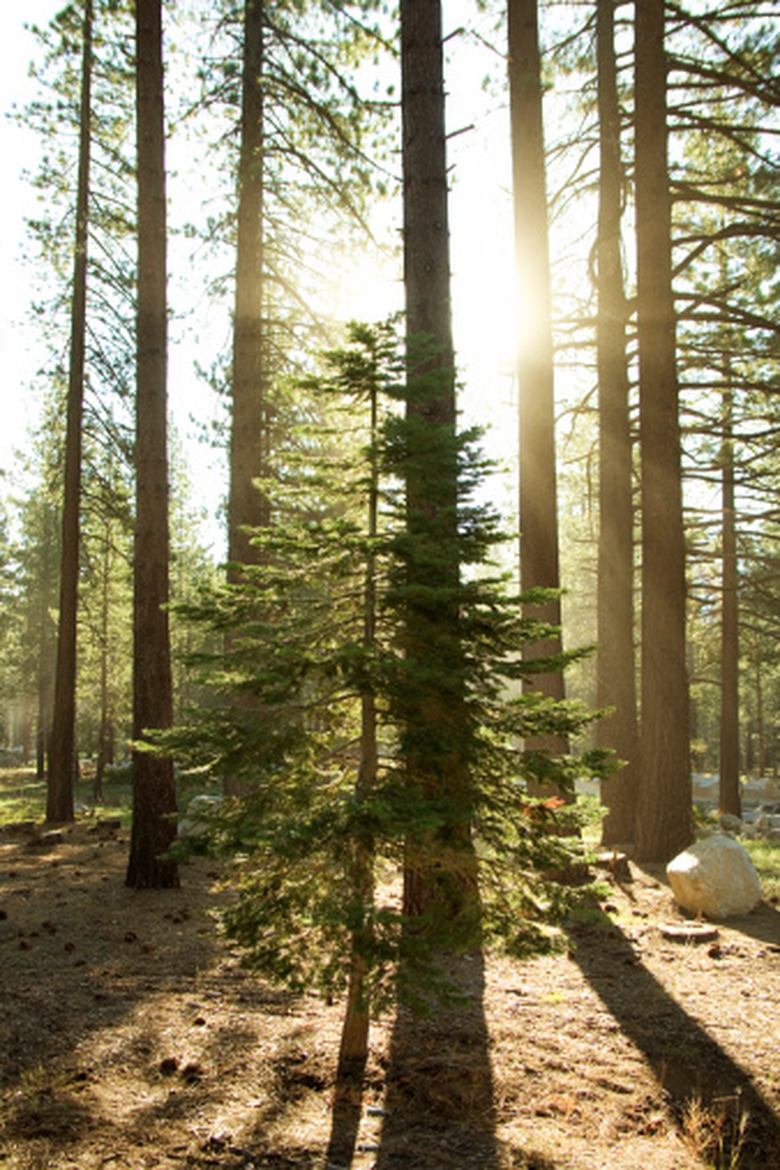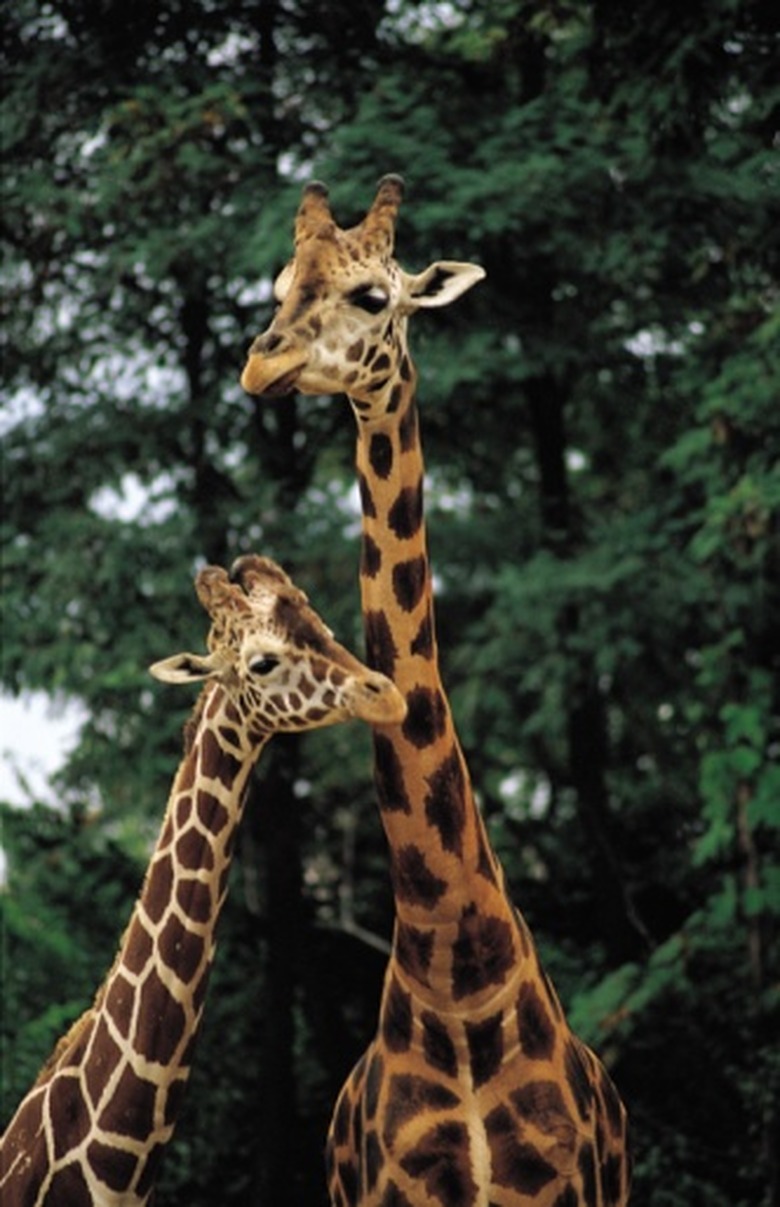Competitive Relationships In Ecosystems
A competitive relationship in a biological community includes the plant and animal species within the ecosystem that compete over food, territories and mating with the opposite sex. Competition occurs in virtually every ecosystem in nature. This relationship develops when more than one organism in an environment has the same need for resources as another to survive. Competition often results in the survival of the fittest.
When Same Species Compete
When Same Species Compete
Rivalry often occurs between members of the same species within an ecological community, known as intraspecific competition. The most common of the competitive relationships, animals of the same species often live together in the same community. These individuals compete for limited resources like food, shelter and mates.
Intraspecific competition helps nature keep the population under control. When food is limited, the environment can only feed so many individuals of the same species. This results in the survival of the fittest, only those capable of winning against their counterparts survive. Similar regulation occurs when individuals compete over shelter for raising young. This is often occurs with young male lions; Animals that lose are driven from the group and from the area.
When Different Species Compete
When Different Species Compete
Interspecific competition occurs when members of more than one species compete for the same resource. Woodpeckers and squirrels often compete for nesting rights in the same holes and spaces in trees, while the lions and cheetahs of the African savanna compete for the same antelope and gazelle prey.
Even though individual animals are competing for the same shelter or food, interspecific competition is usually less critical than intraspecific competition. The antelope, for example, is not the lion's only prey. Because of this, the lion can choose to compete for antelope or to look elsewhere. Animals of different species typically compete with each other only for food, water and shelter. But they often compete with members of their own species for mates and territory as well.
Plant Competition
Plant Competition
Plants also compete for space, nutrients and resources such as water and sunlight. This competition can shape how the ecosystem looks. Taller trees shield a forest's understory — the ground beneath the forest's tree-top canopy — from sunlight, making it hard for anything to grow but the most shade-tolerant plants. The life cycles of some plants are also impacted because many shorter plants flower and bear seeds before the leaves of the taller trees are fully developed, which makes it possible for shorter plants to receive sunlight.
Desert plants have developed shallow, far-reaching roots systems to successfully compete for valuable water resources, which is an example of how competition can affect the evolution of a species.
Evolutionary Specification
Evolutionary Specification
Scientists posit that competitive relationships may at least be partially responsible for the evolutionary process. In natural selection, the individuals of a species best adapted to the environment around them survive to reproduce and pass on the genetics that make them well adapted. Take the giraffe for example, whose evolution of its long neck makes it possible to eat foods with little to no competition. As an herbivore, it completes with other grazing herbivores such as zebras and antelope for food. Giraffes with longer necks are able to reach the leaves of high tree branches, giving them access to more food and a better chance of passing their genetics on to their offspring.
Cite This Article
MLA
Durkee, Debra. "Competitive Relationships In Ecosystems" sciencing.com, https://www.sciencing.com/competitive-relationships-ecosystems-8451289/. 19 April 2018.
APA
Durkee, Debra. (2018, April 19). Competitive Relationships In Ecosystems. sciencing.com. Retrieved from https://www.sciencing.com/competitive-relationships-ecosystems-8451289/
Chicago
Durkee, Debra. Competitive Relationships In Ecosystems last modified August 30, 2022. https://www.sciencing.com/competitive-relationships-ecosystems-8451289/
